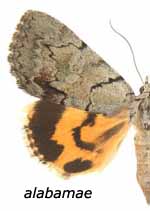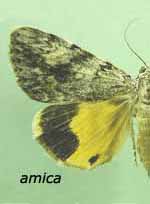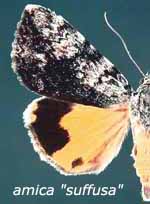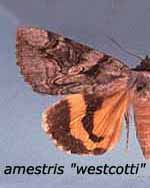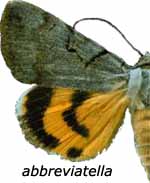Identification Keys
Yellow-Orange
|
Yellow-Orange
|
Yellow-Orange
|
Yellow-Orange
|
Yellow-Orange
|
Yellow-Orange
|
Yellow-Orange
In minuta, the forewing is generally grey-brown with a greatly widened (near the costa only), white, subterminal line. The outer black band of the hindwing is unbroken and the inner band forms a complete loop with considerable brown scaling along the inner margin. The dark brown patch covering the lower half of the median area distinguishes olivia.Micronympha form "gisela" has an almost entirely black forewing. In connubialis forewing marks are distinctive on a white background. |
Return to Main Catocala Index
Return to Identification Keys

